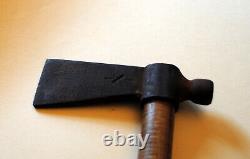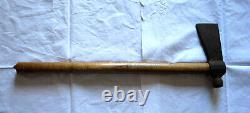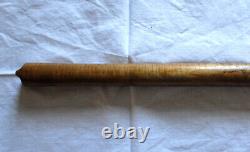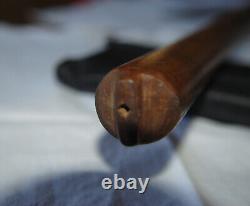
- Homepage
- Department
- Main Stone
- Agate (8)
- Cerrillos Turquoise (8)
- Coral (35)
- Diamond (4)
- Gem Turquoise (3)
- Kingman Turquoise (15)
- Lone Turquoise (9)
- Mother Of Pearl (9)
- Multi-stone (5)
- No Stone (106)
- No Stones (6)
- Opal (5)
- Pearl (4)
- Petrified Wood (28)
- Premium Turquoise (3)
- See Description (3)
- Spiny (4)
- Spiny Oyster (3)
- Turquoise (1163)
- Turquoise, Coral (8)
- Other (2059)
- Metal
- Pendant Shape
- Secondary Stone
- Vintage
Early Native American Fur Trade Pipe Tomahawk / Hatchet









Early Native American Fur Trade Pipe Tomahawk / Hatchet. In his Travels Through the States of North America 1799 , Isaac Weld describes the annual gifts that were given to the Indian Tribes by the fur trade companies. Several bales of thick blankets of blue, scarlet, and brown cloth, and of course figured cottons, together with large rolls of tobacco, guns, flints, powder, balls, shot, case knives, ivory and horn combs, looking glasses, pipe tomahawks , hatchets, scissars (sic), needles, vermillion in bags, copper and iron pots and kettles.. And again later in the same volume he describes the pipe tomahawk. The common tomahawk is nothing more than a light hatchet, but the most approved sort has on the back part of the hatchet, and connected with it in one piece, the bowl of a pipe, so that when the handle is perforated, the tomahawk answers every purpose of a pipe: the Indians indeed are fonder of smoking out of a tomahawk than out of any other sort of pipe. I give the above not as proof of the age of the one we have on offer, but as background to it. Some were obviously manufactured by Europeans as part of the fur trade reward system. This is from that collection. We sent the marks in the blade to the National Iron and Steel Heritage Museum to see if they could identify the maker, but they found nothing. The shaft of the tomahawk is 18" and 1" in diameter. It is constructed from two long pieces of wood which have been joined together. The "mouth end" of the shaft is closed off by a wooden plug with a small air hole in it. We have blown air through it to see that it is joined to the bowl. Additional photos will be provided if wanted.

